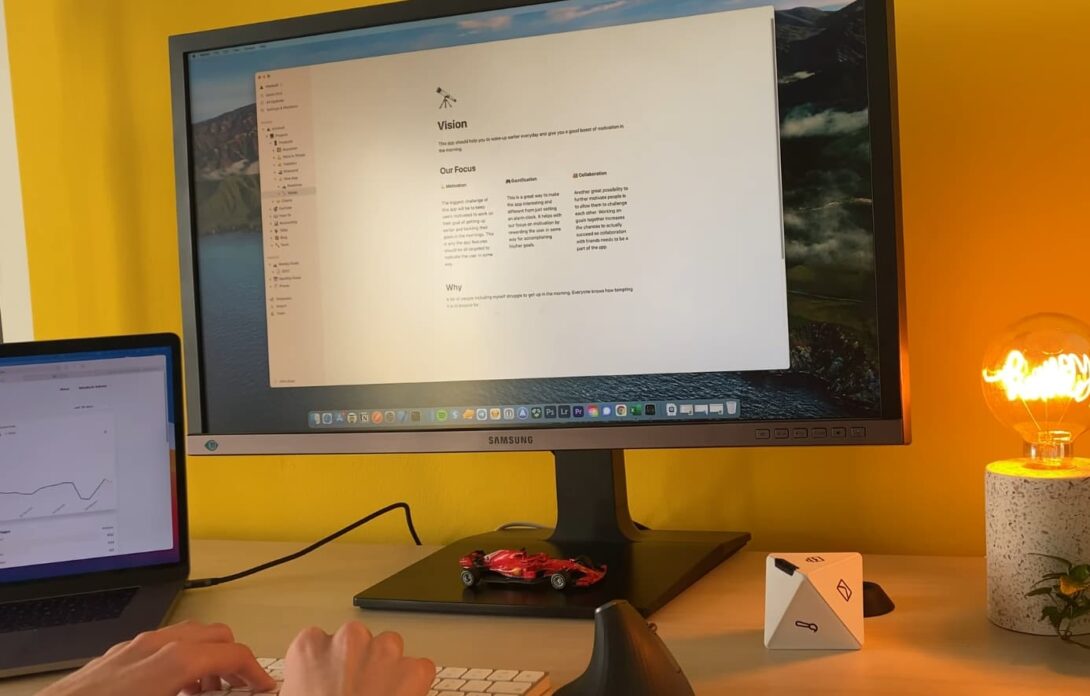What Is Software Development Methodologies?

It’s a long, multi-step process to produce software. This implies you have the freedom to utilize a variety of techniques for planning and execution, ranging from methodologies, frameworks, and project management methods.
However, when it comes to making crucial choices, more isn’t always better. Yet understanding which approaches are best suited for the current project may help reduce operational setbacks. Besides, you can find the best software guides on SoftwareProfy.
SDMs (software development methodology) can be described as a set of rules and principles that aim to manage software development and delivery. Most importantly, SDMs establish different ways of organizing the software development life cycle. For example, from requirements gathering all the way to release [1].

Why Adhere To SDM?
SDM is an effective technique to help your team produce more accurate predictions, stick to deadlines, identify potential issues ahead of time, minimize reworks, and ultimately ship high-performing software.
SDMs provide a framework that helps guide your team through the program development process. By adhering to a specific methodology, you can ensure that your team is following best practices and working efficiently. There are many different SDMs to choose from, so it’s essential to select one that will fit the needs of your project.
There are several reasons why you should adhere to an SDM [2]:
- It can help improve communication between team members;
- It can make it easier to track progress and identify potential problems;
- It can help ensure that quality standards are met;
- It can improve the overall efficiency of the program development process;
Most Common SDMs:
1) Agile Development Methodology
Agile development is an iterative approach to program development that emphasizes flexibility, collaboration, and customer feedback.
The Agile methodology was first outlined in the Manifesto for Agile Program development, which was published in 2001. The Agile approach has since been adopted by many organizations and is now one of the most popular SDMs.
There are many different types of Agile methods, but the most common ones are Scrum, Kanban, and Extreme Programming (XP).
Agile tasks are separated into time increments called sprints, which generally last 1-4 weeks. It’s a model that starts from the beginning and involves tests at each stage of development where developers take customer feedback and make changes to the software as they see fit [3].
2) Waterfall Development Methodology

Waterfall is a linear approach to program development that emphasizes upfront planning and detailed documentation.
The Waterfall methodology was first described in a paper published by Dr. Winston W. Royce in 1970. It is one of the oldest and most popular SDMs, but it has been criticized for being inflexible and not well-suited to rapidly changing requirements. For more details on the topic, check the German version of SoftwareProfy.
The waterfall model is based on the assumption that all requirements can be identified upfront and that the project will linearly proceed through each phase. This often leads to delays and rework, as changes made in later phases can impact earlier ones.
If you want to fix your project’s budget and terms, the program development process known as the Waterfall methodology may be right for you. However, only if your customer understands what they want out of the product down to its smallest details [4].
3) Lean Development
The Lean Development framework was inspired by Toyota’s lean manufacturing process. Its purpose is to cut down on wasted time and resources and to increase productivity. By following the guidelines set out in this framework, developers can avoid activities that don’t contribute to anything productive, and instead focus on tasks that will result in a high-quality product.
The Toyota approach emphasizes continuous learning and the postponement of decision-making. It allows teams to maintain an open mind throughout development and consider all concerns before making a final decision.
The lean methodology requires developers to identify weaknesses that could interfere with the process. The aim is to create a system that runs smoothly without any issues. Furthermore, the methodology emphasizes treating people fairly, which suggests that communication is crucial for boosting team collaboration.
4) Prototype Model
The Prototype model is an SDM used in situations where the requirements for the product are not well understood. In this case, prototypes are created first so that they can be tested and refined before the actual product is developed. This approach can help to reduce the risk of developing a product that does not meet the needs of the customer.
5) Rapid Application Development (the short is RAD)
The main advantage of RAD is that it allows for a quick turnaround time from requirements gathering to delivery of a working product. This is because each phase of the development process builds upon the previous one and there is no need to go back and redo work that has already been completed [5].
Another advantage of RAD is that it promotes communication and collaboration between developers and users. This is because users are involved in the development process from the beginning, which helps to ensure that their needs are being met.

A disadvantage of RAD is that it can be difficult to control the scope of a project since changes can be made at any time during the development process. This can lead to cost overruns and schedule delays.
Another disadvantage of RAD is that it can be difficult to produce high-quality software using this methodology since there is less time for testing and quality assurance.
RAD is a good choice for projects that need to be delivered quickly and for projects with changing requirements. However, it is important to keep scope creep under control and to plan for adequate testing and quality assurance time.
6) Dynamic Systems Model
DSDM is based on the “timeboxing” concept, which means that each program development cycle is given a fixed amount of time to complete [6].
DSDM is an iterative and incremental approach that focuses on delivering working software at regular intervals. It also emphasizes customer involvement throughout the development process.
The main goal of DSDM is to produce high-quality software in a timely and cost-effective manner.
To do this, the framework uses several techniques, including:
- Timeboxing. This ensures that each software development cycle has a fixed amount of time to complete. This helps to prevent scope creep and keep projects on track;
- Iterative and Incremental Development. This helps to ensure that working software is delivered at regular intervals. It also allows for changes to be made based on feedback from customers;
- Customer Involvement. This ensures that customers are involved in the development process and that their needs are taken into account;
DSDM is a flexible framework that can be adapted to suit the needs of any project. It is also easy to learn and use, making it an ideal choice for teams who are new to agile software development.
7) Feature-Driven Development
Feature-Driven Development is a methodology that helps teams deliver software in a timely, cost-effective manner.
Feature-Driven Development is an iterative methodology that emphasizes the delivery of small, incremental software releases. This allows teams to get feedback early and often, which helps to improve the quality of the final product.
This methodology is also based on the principle of “divide and conquer”. This means that large software development projects are divided into smaller, more manageable pieces. This makes it easier for teams to work on individual features and deliver them in a timely manner.
8) Scrum Development
The product owner receives input from the client and ensures that the team is on track in delivering the client’s expectations. Meanwhile, as a facilitator, the Scrum Master keeps team members up to speed on the Scrum methodology. The development is carried out by the team.
The way tasks are completed in sprints is what distinguishes Scrum as a method. Each sprint lasts approximately 4 weeks. The quick execution enables teams to identify difficulties, propose solutions, and evaluate them in a short amount of time. It makes executing fast-paced projects much more simple [7].
Tips For Choosing A SDM
Understand The Needs Of The Client Or User
The first step is to understand what the client or user needs. This will help you determine which SDM would be best suited for the project at hand.
If the client or user wants a system that is very stable and does not need constant changes, then a Waterfall methodology would be more appropriate.
On the other hand, if the client or user wants a system that is flexible and can accommodate constant changes, then an Agile methodology would be more appropriate.
Once you understand the needs of the client or user, you can start narrowing down your options for SDMs.

Consider Project Characteristics
Each SDM has its strengths and weaknesses. It is important to consider the characteristics of your project before choosing a methodology.
For example, if your project is large and complex, then a Waterfall methodology would be more appropriate.
On the other hand, if your project is small and relatively simple, then an Agile methodology would be more appropriate.
Project characteristics that you should consider include size, complexity, duration, and budget.
Determine How Flexible You Can Be
Another important consideration is how flexible you can be with your project.
If you are working on a large and complex project, then it is likely that you will need to be more rigid and follow a Waterfall methodology.
On the other hand, if you are working on a small and relatively simple project, then you can be more flexible and follow an Agile methodology.
It is important to remember that no matter how flexible or rigid you are, there will always be some degree of uncertainty when embarking on any program development project.
FAQ:
1. What are the 5 stages of SDLC?
The SDLC involves planning, designing, developing, testing, and deploying applications with ongoing maintenance to ensure efficient management [8].
2. Is SDLC a framework?
No, the SDLC is not a framework, but it does provide a structure for how program development should be approached.
3. What is Scrum Master in SDLC?
The Scrum Master is responsible for ensuring that the team adheres to the Scrum framework and process. They are also responsible for removing impediments that may prevent the team from meeting their sprint goals.
4. What are the 5 principles of Agile methods?
The five principles of agile methods are customer satisfaction, early and continuous delivery, teamwork, sustainability, and continual improvement.


